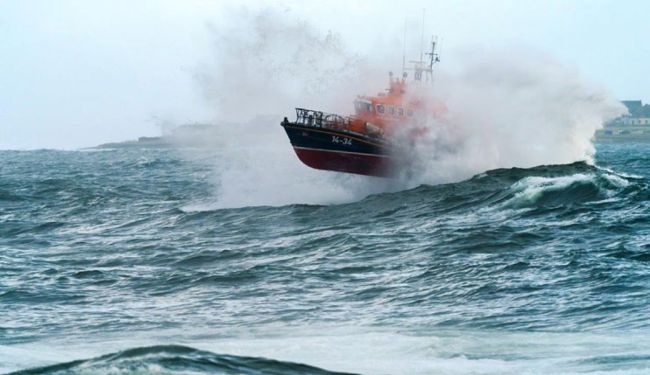Lifesavers at sea
Jackie Macadam considers the milestone 200th anniversary of the RNLI.
AT 11.30pm on a November night last year, in the middle of Storm Arwen, when most of us were tucked up in bed listening to wheelie bins crashing around, a series of pagers went off in Arbroath.
They belonged to the crew of the local RNLI lifeboat. A small ship was dragging its anchor and was in danger of going aground near Lunan Bay.
‘Crews from Arbroath and Montrose forced their way through the 6-metre seas, whipped up by winds gusting up to force 10 and 11. After ascertaining there was no damage to the boat, both crews returned to Montrose, the Arbroath crew to wait until there was a break in the storm and they could return to base, to get ready for the next call out. It was 3.30 in the morning when they got into Montrose harbour.’
That account is taken from one of many reports that appear on the web pages of the RNLI, an institution that has saved over 144,000 lives since its inception in 1824, with 238 lifeboat stations, of which 46 are in Scotland, and has seasonal lifeguards on over 240 beaches around the UK and Ireland. The Royal National Lifeboat Institution was founded 200 years ago, in March 1824, when the vision for a service dedicated to saving lives at sea became a reality, and it has been fulfilling that mission ever since.
Stephen Plant is the Port Chaplain for Portree, one of the RNLI’s island bases. He is also the Community Safety Volunteer for the RNLI among other ‘hats’.
“Rescues can be anything from a problem at a fish farm; kayakers getting into trouble along the coast, fishing boats which have got into trouble at sea, and even being involved with a medical emergency on one of the islands if the ferries have finished for the night. Every time the men and women of the crew here go out, they’re not entirely sure what they’ll face – and remember they are volunteers.
“I have always been humbled by the work they do.”
George Burns used to be a crew member of Thurso and Portree boats and is now their local press officer.
“We are excited to be celebrating our 200 years and have a host of events planned,” he said. “One of the most interesting is on August 1 this year (1/8/24), at precisely 18.24, everyone involved with the RNLI is going to try to take a photo of themselves on the boat, or of the crew etc, at exactly that minute, then all the pictures, from all over the UK, will be uploaded to the official RNLI website.”

Credit: Stephen Hadden
Jill Hepburn, Head of Region for the RNLI in Scotland, said: “On March 4 2024, the Royal National Lifeboat Institution (RNLI) will mark 200 years of lifesaving. Throughout its 200th year, the charity will be running events and activities to commemorate its history, celebrate the modern lifesaving service it provides today, and inspire future lifesavers and supporters.
“Funded by voluntary donations, and with lifeboats crewed by volunteers, the RNLI is a truly unique rescue organisation.
“But, while innovations and developments in technology over the course of 200 years have inevitably changed how the charity saves lives, some things have remained the same. The volunteering ethos at the heart of the RNLI is what makes the charity so special – and generous donations have continued to power the RNLI’s lifesaving work.”
“This year, we hope to inspire future generations of lifesavers and supporters who will take the RNLI into its next century and beyond.” ¤